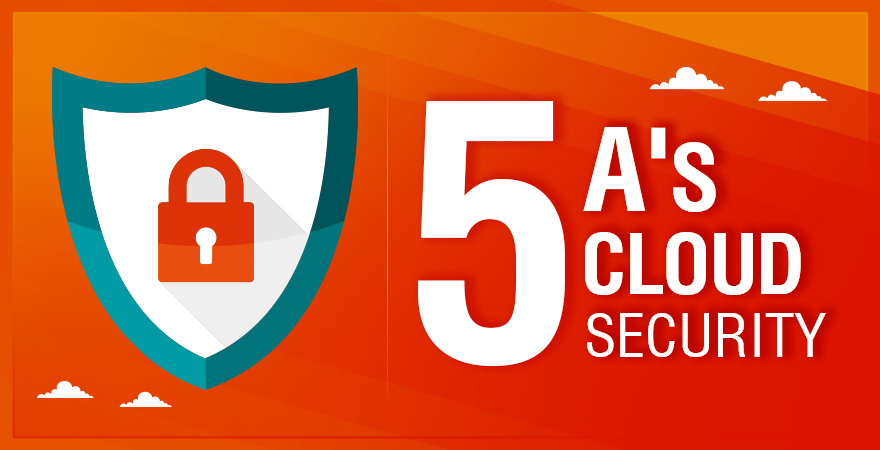Cloud Computing is a robustly growing domain within the information technology landscape. As more and more organizations transition towards full on digitization and process automation, the cloud tends to offer notable advantages.

Also Read: Top 11 Guidelines for Cloud Security in 2020
Greatest Pitfall of Cloud Migration
There are no two opinions on the inherent complexities that an entity is likely to face when migrating to a cloud based architecture. Whether partial or complete, most cloud transitions are accompanied by tight and at times, unrealistic timelines.

By far, the biggest casualty in this unwarranted haste is cyber security of the cloud solution. The situation gets even worse when an organization either goes for a hybrid cloud adoption or plans to integrate a multi cloud architecture from the outset.
Also Read: How to Achieve a Secure Cloud Going Into 2020?
Presumptions About Cloud Security
Most organizations moving to the cloud tend to falsely presume that once migrated to the cloud, the security of organizational data becomes the sole domain of the Cloud Service Provider (CSP). This sort of presumption can inflict a lot of damage to you.
Cloud Security; A Joint Responsibility
It is pertinent to clear up front that the security of your cloud powered solution or architecture is a collective responsibility that will be shared between the CSP and the cloud adopting entity.
Also Read: Cloud Security Breaches of 2019 and the Way Forward
The 5 As of Cloud Security
Cloud security has to be viewed as a complex process that needs thoughtful planning and meticulous execution to bear maximum fruits. Let’s discuss its key facets:-
Assessment
Securing your cloud deployment starts with a realistic assessment of your infrastructure and security needs. This assessment process has to start with the type of cloud architecture that you are planning to deploy.
Whether it would be a full cloud, hybrid cloud or multi cloud deployment will dictate the course of action that you chalk out for securing your solution. By far, a hybrid model is relatively complex and a multi cloud solution is highly challenging to secure.
Also Read: 8 Reasons: Why Cloud Computing For Small Business?
This assessment that you conduct for your entity’s cyber security needs will serve as the building block for devising a comprehensive and all encompassing cloud security roadmap. A high level understanding of the cloud architecture will be the key to success.
Analysis
The analysis phase of your cloud security can be further broken down into two steps. By keeping your assessed needs as the benchmark, you will pitch your cloud security needs with the corresponding solutions offered by your Cloud Solution Provider.
In the ideal case scenario, all your cyber security needs would be catered fully by the CSP but this rarely happens. In case the CSP is deficient in any aspect of cyber security, you will have to come up with alternative solutions.
An important aspect of your analysis phase will be to select between an in house security solution or directly deploy a third party solution that fulfills your security needs on paper. Cost and deployment lag time in both cases must be factored in properly.
Also Read: Protecting Your Business from Cyber Attacks
Action
Once you have assessed and analyzed your cloud security needs, the next and very crucial phase is bringing all the plans to reality. The starting point for this phase should be a full deployment of all the security tools and protocols envisaged by the CSP.
The main reason for this chronological order is that there is nearly zero room for manipulation when it comes to implementing the CSP side of security protocols. Once the CSP side of deploying security tools is complete, work on the custom side can begin.
Following this approach to security will greatly enhance the effectiveness of your security strategy. After deployment of CSP side security protocols is complete, you will simply use a “plug the gaps” approach for the remaining facets of your cloud’s security.
Assurance
In today’s cyber space that is teeming with threats of all kinds, cloud security is becoming a daunting challenge that never tends to take a breather. Cyber criminals and thieves are becoming ever more crafty and persistent in their nefarious designs.
Also Read: 12 Security Questions to Ask From Your Cloud Solution Provider
Therefore, it would be a grave mistake if you devise and implement a nearly perfect cloud security solution and simply sleep over it. Treating every new cyber threat or security breach as a wakeup call will enable you to remain a step ahead of cyber threats.
Only way of attaining this near impossible feat is a constant assessment of your cloud security posture and pitching it against the detected and yet undiscovered threats on a constant basis. Even the smallest fault lines in your security need to be addressed.
Auditing
You should conduct audits of your solution’s cyber security by employing a two dimensional approach. Firstly, there should be a dedicated team of cyber security experts in house that performs stringent cyber security audits on a regular basis.
In the present hostile cyber space, this may prove inadequate and you should incorporate an independent, third party audit of your cloud’s security posture periodically. This will bring in a new perspective to your existing efforts to achieve full proof security.
Conclusion
It would be unfair to pass a blanket statement that on premise architecture is less prone to cyber threats as compared to cloud powered solutions. If we analyze the latest stats about cyber threats and breach incidents, the gap between the two is diminishing fast.
This is largely due to the rapidly improving cyber security measures offered by present day CSPs. Although no one can claim a cent percent secure cloud solution in today’s cyber space, you can remain well immune to internal and external threats by adopting this path.


